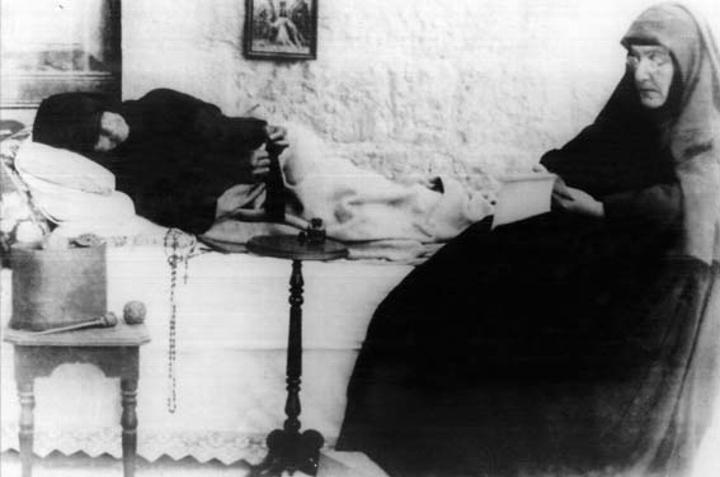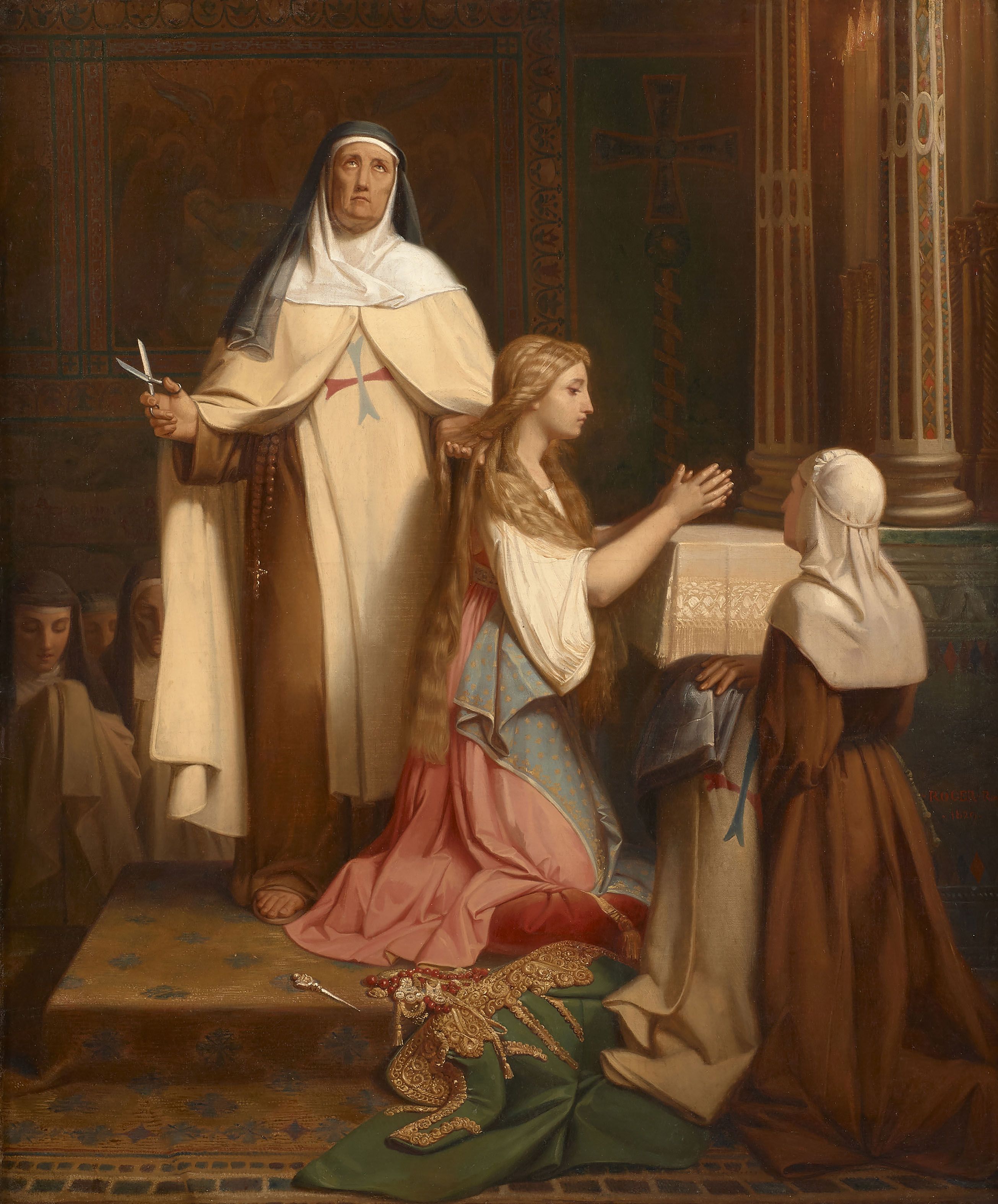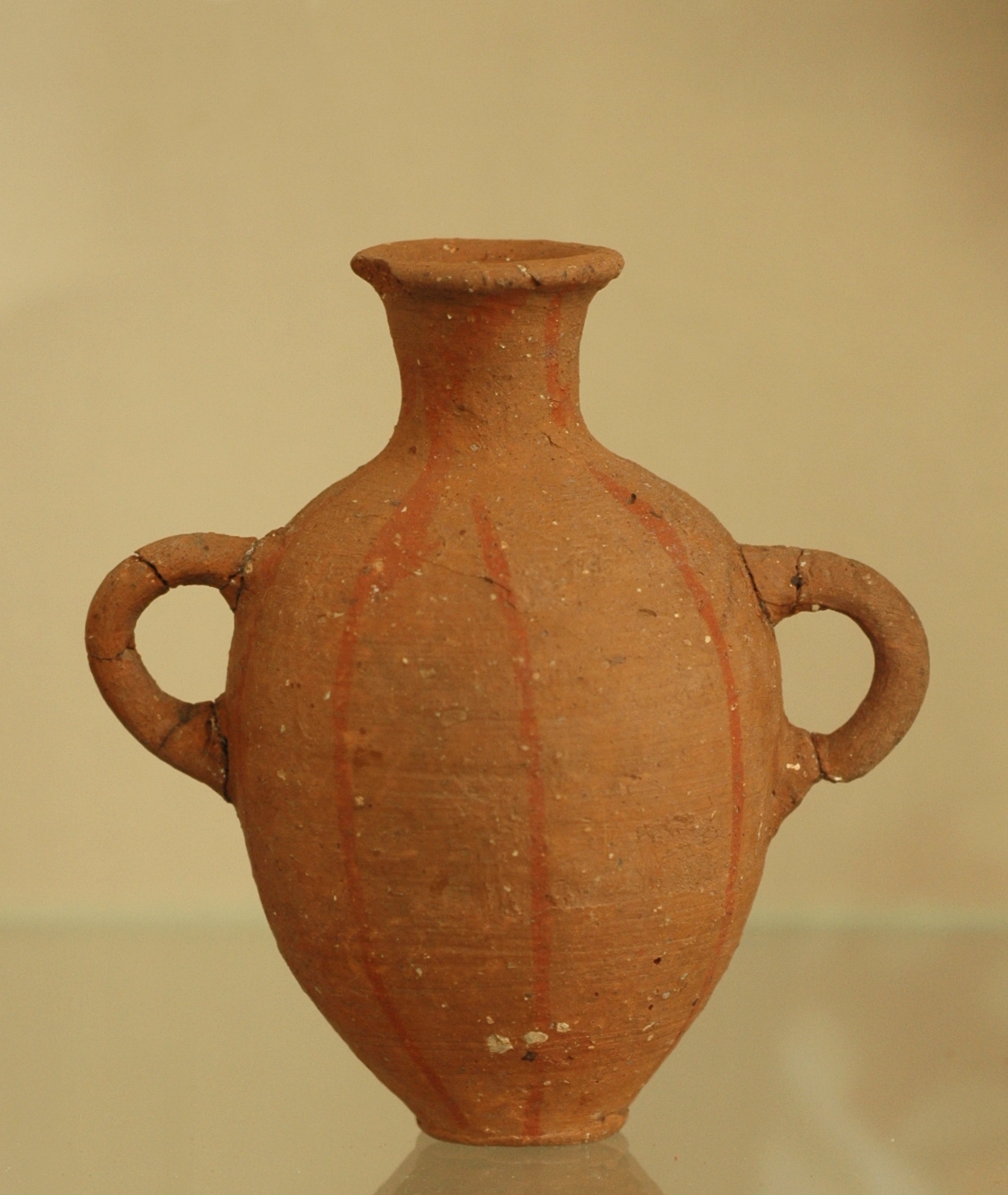|
Rafqa Pietra Choboq Ar-Rayès
Rafqa Pietra Chobok (Arabic: رفقا بطرسيّة شبق , June 29, 1832 – March 23, 1914), also known as Saint Rafka and Saint Rebecca, was a Lebanese Maronite nun who was canonized by Pope John Paul II on June 10, 2001. She is a patron of lost parents and the sick. Birth and youth Rafka was born in Himlaya, in Matn District, on June 29, 1832, the Feast of Saints Peter and Paul, the only child of Saber Mourad El Rayess and Rafqa Gemayel, and was baptised Boutrossieh (the Arabic feminine of ''Peter''). Her mother died when she was seven years old. In 1843, her father experienced financial difficulties and sent her to work as a servant for four years in Damascus at the home of Assaad Al-Badawi. She returned home in 1847 to find that her father had remarried."Rafqa Pietra Choboq Ar ... [...More Info...] [...Related Items...] OR: [Wikipedia] [Google] [Baidu] |
Lebanese Maronite Order
The Baladites, formally known as the Lebanese Maronite Order (; abbreviated OLM), is a monastic order among the Levant-based, Catholic Maronite Church, which from the beginning has been specifically a monastic Church. The order was founded in 1694 in the Monastery of Mart Moura, Ehden, Lebanon, by three Maronite young men from Aleppo, Syria, under the patronage of Patriarch Estephan El Douaihy (1670–1704). The Aleppian monks of Aleppo, a city in present Syria resulted from a split with the Baladites. Pope Clement XIV sanctioned this separation in 1770. See also * Monastery of Qozhaya * Maronite Religious Institutes (Orders) ** Antonins ** Aleppians ** Kreimists or Lebanese missionaries * Melkite Religious Institutes (Orders) ** Basilian Chouerite Order ** Basilian Salvatorian Order The Basilian Order of the Most Holy Saviour () abbreviated BS, also known as the Basilian Salvatorian Order, is an Eastern Catholic monastic order of Pontifical Right for men of the Gree ... [...More Info...] [...Related Items...] OR: [Wikipedia] [Google] [Baidu] |
Damascus
Damascus ( , ; ) is the capital and List of largest cities in the Levant region by population, largest city of Syria. It is the oldest capital in the world and, according to some, the fourth Holiest sites in Islam, holiest city in Islam. Known colloquially in Syria as () and dubbed, poetically, the "City of Jasmine" ( ), Damascus is a major cultural center of the Levant and the Arab world. Situated in southwestern Syria, Damascus is the center of a large metropolitan area. Nestled among the eastern foothills of the Anti-Lebanon mountain range inland from the eastern shore of the Mediterranean on a plateau above sea level, Damascus experiences an arid climate because of the rain shadow effect. The Barada, Barada River flows through Damascus. Damascus is one of the List of oldest continuously inhabited cities, oldest continuously inhabited cities in the world. First settled in the 3rd millennium BC, it was chosen as the capital of the Umayyad Caliphate from 661 to 750. Afte ... [...More Info...] [...Related Items...] OR: [Wikipedia] [Google] [Baidu] |
Perpetual Vows
Religious vows are the public vows made by the members of religious communities pertaining to their conduct, practices, and views. In the Buddhist tradition, in particular within the Mahayana and Vajrayana traditions, many different kinds of religious vows are taken by the lay community as well as by the monastic community, as they progress along the path of their practice. In the monastic tradition of all schools of Buddhism, the Vinaya expounds the vows of the fully ordained Nuns and Monks. In the Christian tradition, such public vows are made by the religious cenobitic and eremitic of the Catholic Church, Lutheran Churches, Anglican Communion, and Eastern Orthodox Churches, whereby they confirm their public profession of the evangelical counsels of poverty, chastity, and obedience or Benedictine equivalent. The vows are regarded as the individual's free response to a call by God to follow Jesus Christ more closely under the action of the Holy Spirit in a particular form of r ... [...More Info...] [...Related Items...] OR: [Wikipedia] [Google] [Baidu] |
Saint George
Saint George (;Geʽez: ጊዮርጊስ, , ka, გიორგი, , , died 23 April 303), also George of Lydda, was an early Christian martyr who is venerated as a saint in Christianity. According to holy tradition, he was a soldier in the Roman army. Of Cappadocian Greek origin, he became a member of the Praetorian Guard for Roman emperor Diocletian, but was sentenced to death for refusing to recant his Christian faith. He became one of the most venerated saints, heroes, and megalomartyrs in Christianity, and he has been especially venerated as a military saint since the Crusades. He is respected by Christians, Druze, as well as some Muslims as a martyr of monotheistic faith. In hagiography, he is immortalised in the legend of Saint George and the Dragon and as one of the most prominent military saints. In Roman Catholicism, he is also venerated as one of the Fourteen Holy Helpers. His feast day, Saint George's Day, is traditionally celebrated on 23 April. Historic ... [...More Info...] [...Related Items...] OR: [Wikipedia] [Google] [Baidu] |
Anthony The Abbot
Anthony the Great (; ; ; ; – 17 January 356) was a Christian monk from Egypt, revered since his death as a saint. He is distinguished from other saints named Anthony, such as , by various epithets: , , , , , and . For his importance among the Desert Fathers and to all later Christian monasticism, he is also known as the . His feast day is celebrated on 17 January among the Eastern Orthodox and Catholic churches and on Tobi 22 in the Coptic calendar. The biography of Anthony's life by Athanasius of Alexandria helped to spread the concept of Christian monasticism, particularly in Western Europe via its Latin translations. He is often erroneously considered the first Christian monk, but as his biography and other sources make clear, there were many ascetics before him. Anthony was, however, among the first known to go into the wilderness (about AD 270), which seems to have contributed to his renown. Accounts of Anthony enduring supernatural temptation during his sojo ... [...More Info...] [...Related Items...] OR: [Wikipedia] [Google] [Baidu] |
Monastery Of Qozhaya
Monastery of Saint Anthony of Qozhaya, or Monastery of Qozhaya (also Qazahya; , ) is a large and important Maronite monastery. It is located in the Zgharta District in the North Governorate of Lebanon. The Monastery of Qozhaya holds significant importance within Maronite tradition and history. Its origins date back to the 13th century, serving as a residence for monks and, at one point, functioning as the headquarters of the Maronite Patriarchate. In the 16th century, it housed the Middle East's first printing press, which is still accessible to visitors. Its land holdings extended to the surrounding areas of the Kadisha Valley. The monastery features a notable church, housing for nuns and monks, and an expansive cave known as the Grotto of Saint Anthony. Known for its association with various events, it also offers a guest house. Name and etymology It is dedicated to Saint Anthony the Great. It is commonly called Qozhaya, in reference to the valley in which it is located. Th ... [...More Info...] [...Related Items...] OR: [Wikipedia] [Google] [Baidu] |
Religious Sisters
A religious sister (abbreviated: Sr.) in the Catholic Church is a woman who has taken public vows in a religious institute dedicated to apostolic works, as distinguished from a nun who lives a cloistered monastic life dedicated to prayer and labor, or a canoness regular, who provides a service to the world, either teaching or nursing, within the confines of the monastery. Nuns, religious sisters and canonesses all use the term "Sister" as a form of address. The ''HarperCollins Encyclopedia of Catholicism'' (1995) defines "congregations of sisters s institutes of women who profess the simple vows of poverty, chastity, and obedience, live a common life, and are engaged in ministering to the needs of society." As William Saunders writes: "When bound by simple vows, a woman is a sister, not a nun, and thereby called 'sister'. Nuns recite the Liturgy of the Hours or Divine Office in common .. ndlive a contemplative, cloistered life in a monastery ..behind the 'papal enclosure'. Nun ... [...More Info...] [...Related Items...] OR: [Wikipedia] [Google] [Baidu] |
Byblos
Byblos ( ; ), also known as Jebeil, Jbeil or Jubayl (, Lebanese Arabic, locally ), is an ancient city in the Keserwan-Jbeil Governorate of Lebanon. The area is believed to have been first settled between 8800 and 7000BC and continuously inhabited since 5000BC. During its history, Byblos was part of numerous cultures including Old Kingdom of Egypt, Egyptian, Phoenician, Assyrian, Achaemenid Empire, Persian, Hellenistic period, Hellenistic, Roman Empire, Roman, Genoese Republic, Genoese, Mamluk Sultanate, Mamluk and Ottoman Empire, Ottoman. Urbanisation is thought to have begun during the third millennium BC when it developed into a city, making it one of the List of oldest continuously inhabited cities, oldest cities in the world, if not the oldest. It is a UNESCO World Heritage Site. It was in Ancient Byblos that the Phoenician alphabet, likely the ancestor of the Greek alphabet, Greek, Latin and all other Western alphabets, was developed. Etymology The name appears as ''Keb ... [...More Info...] [...Related Items...] OR: [Wikipedia] [Google] [Baidu] |
Ghazir
Ghazir () is a town and municipality in the Keserwan District of the Keserwan-Jbeil Governorate of Lebanon. It is located north of Beirut. It has an average elevation of 380 meters above sea level and a total land area of . Ghazir is divided into three major parts: Ghazir el-Fawka, Central Ghazir, and Kfarhbab. The inhabitants of Ghazir are predominantly Maronite Catholics. The town has four schools, two public and two private, with a total of 3,253 students as of 2008. Maameltein is part of the town. Etymology Ghazir's name is derived from Arabic root words for "heavy rains", and the town is known for its numerous groundwater reserves. History Mamluk period In the 13th century, when Ghazir was a small village, the Mamluk army invaded Keserwan and destroyed Ghazir among other villages of the district. However, at the time, the local Maronite militias were able to repel the Mamluks. The latter returned in 1305, launching a third surprise offensive against the Keserwani Ma ... [...More Info...] [...Related Items...] OR: [Wikipedia] [Google] [Baidu] |
Religious Congregation
A religious congregation is a type of Religious institute (Catholic), religious institute in the Catholic Church. They are legally distinguished from Religious order (Catholic), religious orders – the other major type of religious institute – in that members take simple vows, whereas members of religious orders take solemn vows. History Until the 16th century, the vows taken in any of the religious orders approved by the Holy See, Apostolic See were classified as solemn.Arthur Vermeersch, "Religious Life" in The Catholic Encyclopedia, Vol. 12. New York: Robert Appleton Company, 1911 . Accessed 18 July 2011. This was declared by Pope Boniface VIII (1235–1303). According to this criterion, the last religious order foun ... [...More Info...] [...Related Items...] OR: [Wikipedia] [Google] [Baidu] |
Religious Vows
Religious vows are the public vows made by the members of religious communities pertaining to their conduct, practices, and views. In the Buddhist tradition, in particular within the Mahayana and Vajrayana traditions, many different kinds of religious vows are taken by the lay community as well as by the monastic community, as they progress along the path of their practice. In the monastic tradition of all schools of Buddhism, the Vinaya expounds the vows of the fully ordained Nuns and Monks. In the Christian tradition, such public vows are made by the religious cenobitic and eremitic of the Catholic Church, Lutheran Churches, Anglican Communion, and Eastern Orthodox Churches, whereby they confirm their public profession of the evangelical counsels of poverty, chastity, and obedience or Benedictine equivalent. The vows are regarded as the individual's free response to a call by God to follow Jesus Christ more closely under the action of the Holy Spirit in a particular form of ... [...More Info...] [...Related Items...] OR: [Wikipedia] [Google] [Baidu] |
Druze
The Druze ( ; , ' or ', , '), who Endonym and exonym, call themselves al-Muwaḥḥidūn (), are an Arabs, Arab Eastern esotericism, esoteric Religious denomination, religious group from West Asia who adhere to the Druze faith, an Abrahamic religions, Abrahamic, Monotheism, monotheistic, and Religious syncretism, syncretic religion whose main tenets assert the unity of God, reincarnation, and the eternity of the soul. Although the Druze faith developed from Isma'ilism, Druze do not identify as Muslims. They maintain Arabic language and Arabic culture, culture as integral parts of their identity, with Arabic being their primary language. Most Druze religious practices are kept secret, and conversion to their religion is not permitted for outsiders. Interfaith marriages are rare and strongly discouraged. They differentiate between spiritual individuals, known as "uqqāl", who hold the faith's secrets, and secular ones, known as "juhhāl", who focus on worldly matters. Druze be ... [...More Info...] [...Related Items...] OR: [Wikipedia] [Google] [Baidu] |







